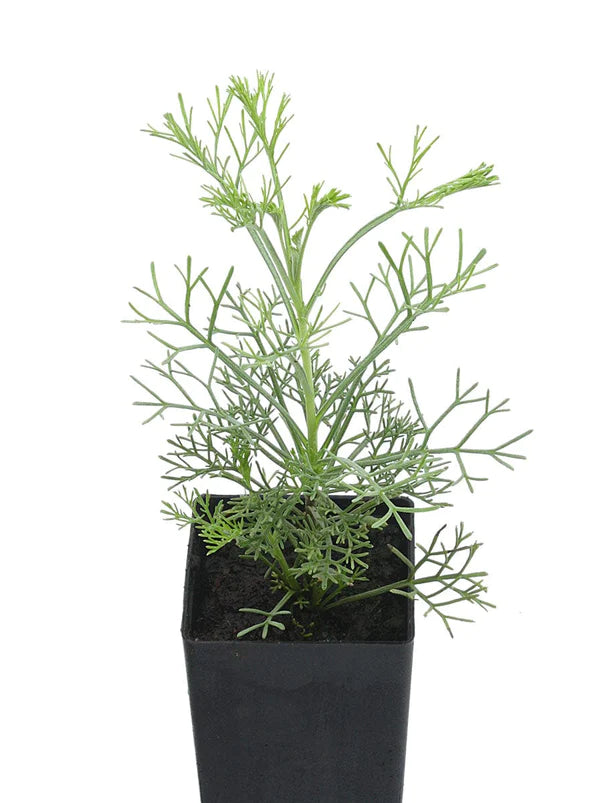Natures pharmacy
Wormwood (Plant)
Wormwood (Plant)
Couldn't load pickup availability
Usually available: All year
Life cycle: Perennial
Height: 40 - 50cm
Position: Full sun
Soil preference: Well drained
You will receive
- 1 Wormwood Camphor Herb Plant in a 50 X 75mm tube - General growing instructions
All of our Herb Plants are grown organically with certified organic potting mixes and fertilizers
Botanical Name: Artemesia camphorata
Camphor Wormwood is a medium growing, evergreen plant reaching 40 - 50cm high by a similar width. Like many wormwoods it spreads by creeping rhizomes, so the plant may ultimately be wider than it is tall. Some information indicates that the plants will be lower growing. However, there is often confusion with many synonyms for the wormwoods. The attractive, green grey leaves have a camphor aroma and attract bees, butterflies and birds. The flowers are yellow and bloom in summer through to early autumn.
This wormwood may also be known as ‘a southernwood’ in some regions, particularly the United States. It is distinct from another plant called the ‘field southernwood’ which has green leaves and a lemon aroma. Another synonym that is used is A. alba. Turra, so it is best to check the plant’s characteristics when doing research. A.alba is thought to be from Europe and is somewhat variable in type, which may have resulted in some of the variation in naming practices.
Artemisia alba ‘Camphor’ is bitter tasting, but has been used for culinary purposes. It is also known to contain valuable essential oils and have been used for antibacterial treatments in traditional medicine.
Growing Conditions
This wormwood requires regular water, but is generally considered drought tolerant. Be careful not to overwater due to the risk of promoting root rot. The most preferred soil type for camphor wormwood is slightly acidic to neutral. As with other Artemisia species, this plant should be quite frost tolerant.
Propagation is via dividing the root ball, by taking hardwood or softwood cuttings or by layering the stems. The flowers are insignificant and it does not produce viable seed.
A Note on the Wormwoods
Wormwood is the common name for many plants in the Artemisia genus, which has from 200-400 named species. Each species quite likely also has many synonyms. In many cases, the name wormwood is used interchangeably with mugwort, although they are two separate species. When looking for a specific plant, be sure to check for the scientific name so you can have some certainty.
The wormwoods are hardy, woody perennials that remain evergreen during warm winters. In colder regions they generally return in spring when the seasons change. Most are very hardy, having originated in arid or semi-arid regions with poor soils and limited moisture. Some of the plants in this genus do have greenish foliage, but many have silver - grey - white foliage and these are highly prized ornamental plants. They usually have insignificant flowers and many hybrids do not produce viable seed. Most are best propagated by cuttings.
The name Artemisia is from Ancient Greek used in Hellenistic cultures, where the Goddess Artemis was the goddess of the hunt, protector of the forest and children. Artemis was also a protector of women, particularly those experiencing childbirth. The goddess Artemis was also said to be the goddess of the herbalist. The term wormwood is from the Middle English wormwode or wermode, which was attributed to the plants antihelminthic attributes in helping to expel worms from the body.
Plants such as wormwood, mugwort and sagebrush are all known for their high essential oil content. All are well known, with a long tradition in magic and folklore, where they are used for both their natural and supernatural properties. In old times, hanging Artemisia on the door was a sign that a midwife or herbalist was in residence.
All information provided on this website is for informational purposes only. Please seek professional advice before commencing any treatment.
Share


